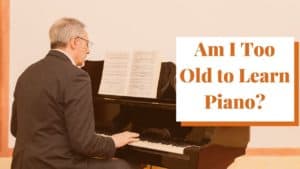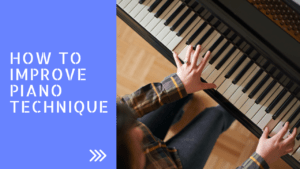How to Practice Piano Without a Piano
A traditional piano can take up a lot of space in your home and many people ask the question “Can I learn piano if I don’t have a piano?”. Sadly, the short answer is no. But, there are some techniques that you can practice to improve your playing when you do have access to keys again. It is possible to strengthen your fingers, improve your control and make them more precise for playing piano. Let’s take a look at how you can practice piano techniques without access to a piano.
Table of Contents
Improving Your Dexterity
One of the easiest ways to improve your dexterity to play the piano well is to practice on a flat surface. Any table or desk will do, simply create finger patterns by playing them on the surface. Consider that you technically have five fingers on each hand because your thumb is included for playing. So, you can write out 1-5 numbers randomly and play them with both hands. Start with your dominant hand and then add your other hand later. Eventually, you should be able to “play” with both hands at the same time. You can add an extra challenge by mixing up the number order to improve a finger that’s giving you some problems. If you practice each day, you will notice an improvement when you get back to a piano keyboard.
Sheet Music Studies
If you have time away from a piano, it’s the perfect opportunity to study your favorite sheet music. This is especially true when traveling and you can really learn the notes and marking on pieces you want to learn and play. Try to play the song on the piano in your mind and use the other techniques listed here to help. Each note you play on a flat surface should be struck with correct fingering techniques. This type of learning is known as “visualization” and it’s used in many fields from music to sports. When you can imagine yourself playing a piece perfectly, it will help you to become more familiar with the song. You will notice that you have a better understanding of sheet music and playing will be easier when you get back to your piano.
Practicing Rhythm and Dynamic Playing
The only way to use this technique for practice is to use a metronome. So, this isn’t a quiet method and it’s easy to annoy people if you’re not alone. Most people, especially non-musicians, hate metronome sounds and they are very intentionally repetitive. You can use a metronome app on your phone or an analog unit if you prefer. Set the tempo to an appropriate speed for your level and then practice “playing” scales on your forearm. This will help you to gauge how hard you press against your skin to achieve even pressure from every note played. If you can feel one finger pressing harder than the others, bring it into line with the others and you will have more consistent playing.
Tapping Out Rhythms
This could be annoying, but you can do it quietly if other people are around. Simply tap out a variety of rhythms between hands to improve your timing skills. Tap out a quarter not on your left hand and an eighth note with your right hand. Then attempt some triplets or dotted-rhythms to mix things up a little.
Use a Digital Piano
An acoustic piano is a wonderful instrument to play, but they are usually heavy, expensive and they have a large footprint in your home. An upright traditional piano is easier to live with but many people prefer a digital piano. There are many types of digital piano on the market and there is sure to be one to suit your budget. If you want to practice regularly and you don’t have access to an acoustic piano they are a good substitute. If you can play a piece on a digital piano, the same skills will apply to an acoustic piano too. But, there are three main factors that could affect the transfer of your digital piano playing to a different “real” piano, they are:
1.Size
Some digital pianos have a full-sized 88-key keyboard, which is ideal when you want to learn piano. Others may have fewer keys which may be an option, if you have very limited space. But, dropping to below a 76-key keyboard is not recommended and it may impede the learning process. Many cheaper keyboards have semi-weighted keys that have a limited dynamic range which makes learning classical music difficult. The best option is to get an 88-key digital piano with fully-weighted keys. If you want a smaller footprint, get an upright model which you can place up against a wall.
2.Volume
Many people don’t pay much attention to the volume of their digital piano. Unless you’re planning to connect your piano to an external sound system you’re going to be using the internal speakers. If those speakers are low quality, you may have a quieter sound. When you transition to a real acoustic piano, you may be shocked at the louder sound. The best compromise is to play your digital piano with headphones or get an instrument with good speakers.
3.Graded Action
When you choose a digital piano, it’s advisable to get a keyboard that has graded action. This is a feature on many modern digital pianos and it doesn’t add much or anything to the price. Graded action is the process that imitates the imbalanced nature of a real acoustic piano. This system makes the lower keys feel heavier than the higher notes and this is progressive from the lowest note upwards. In recent years, this technology has matured and the very best digital pianos are hard to distinguish from the real thing. If you want to make the transition to a traditional piano, choose graded action to make the process easier.
In Conclusion
The best way to practice playing the piano is to sit at a real acoustic piano. But, hopefully, we’ve shown that you can practice some techniques if you don’t have an available piano. Using these methods will help and you will notice a difference next time you play.

